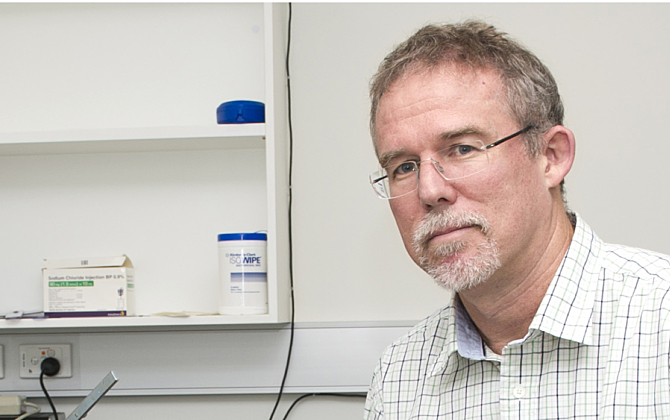A lot of fundamental questions about muscles have yet to be answered, says NeuRA researcher Prof Rob Herbert. But that may be about to change with the use of diffusion tensor imaging (DTI).

Example of a 3D reconstruction of the muscle fibre structure of a human calf muscle using diffusion tensor imaging.
DTI is an MRI-based imaging technique typically used to measure white matter in the brain. Recent advancements in imaging technology have allowed researchers to more accurately measure muscle fibres as well. This will be put to good use in a new clinical trial aimed at understanding the cause of muscle contracture in children with cerebral palsy.
“Previously, we would use ultrasound to look inside muscles to see how they lengthen and contract. The ultrasound would produce 2D images, which were effective, but accurate measurements of the length of muscle fascicles required some manipulation of the transducer by the sonographer,” says Prof Rob Herbert. This resulted in errors.
A recent study conducted by NeuRA researchers compared the images produced by ultrasound with those acquired using DTI, and found that there were sizeable errors in measurement due to misalignment of the ultrasound transducer with the underlying muscle fibres. The ultrasound measurements of fibre lengths were, on average, about 20 percent off. It was also found that shape changes of the muscle caused by pressing the transducer on the skin resulted in systematic errors.
The study suggests that errors will be even greater when images are obtained in dynamic or active conditions, such as when trying to measure and understand contracture after stroke or in children with cerebral palsy.
The study revealed that DTI produces more reliable images and minimised the effect of errors typically found in ultrasound images. “Muscles have complex 3D shapes, so 3D methods such as DTI have many advantages over the more conventional 2D techniques like ultrasound imaging,” says Prof Herbert.
The techniques developed and used by Bolsterlee, Herbert and Gandevia are widely applicable and should enable the study of physiological and biomechanical phenomena with greater spatial resolution than is possible with ultrasound.
This study was published in the journal PloS One.




